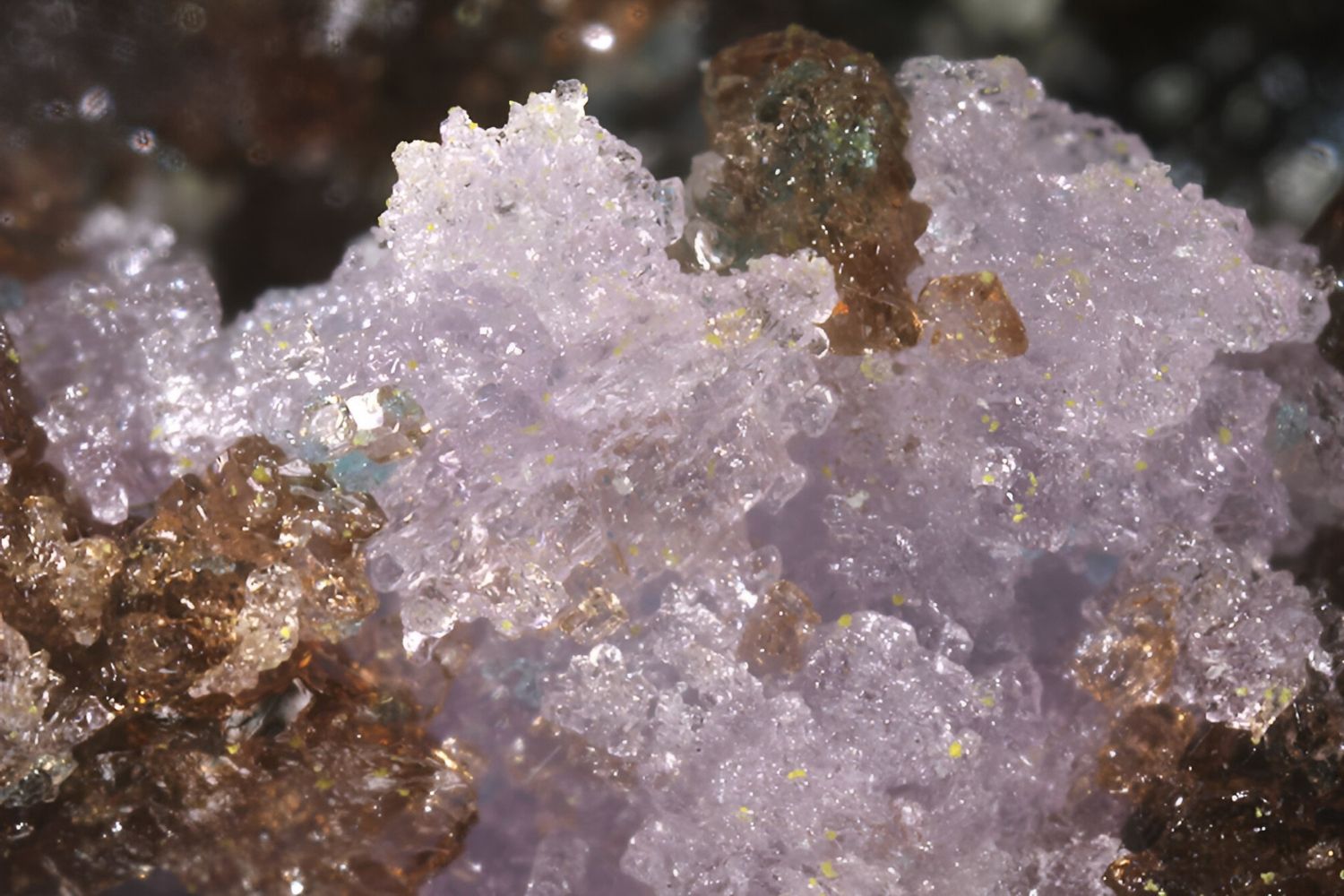
Quenstedtite is a fascinating mineral that often sparks curiosity among geology enthusiasts. Named after the German mineralogist Friedrich August von Quenstedt, this mineral boasts a unique set of characteristics that make it stand out. Quenstedtite typically forms in arid regions, where it crystallizes in beautiful, intricate shapes. Its striking colors, ranging from pale yellow to deep orange, make it a visual treat. But what exactly makes Quenstedtite so special? Quenstedtite is not just about looks; it has a rich history and interesting properties that are worth exploring. From its chemical composition to its formation process, there's a lot to learn about this intriguing mineral. Ready to dive into 25 captivating facts about Quenstedtite? Let's get started!
Key Takeaways:
- Quenstedtite is a colorful mineral found in arid regions, forming stunning stalactites in caves. It's a collector's gem and a valuable tool for studying geological formations.
- Named after a German mineralogist, Quenstedtite has unique properties and can dehydrate to form another mineral. It's a shiny, translucent mineral used in educational settings and admired in mineralogical museums.
What is Quenstedtite?
Quenstedtite is a fascinating mineral with unique properties and a rich history. Named after the German mineralogist Friedrich August von Quenstedt, this mineral has intrigued scientists and collectors alike. Let's dive into some intriguing facts about Quenstedtite.
-
Quenstedtite is a sulfate mineral composed of iron and sulfur.
-
It has the chemical formula Fe2(SO4)3·11H2O.
-
This mineral typically forms in oxidized zones of iron-bearing deposits.
-
Quenstedtite crystals are usually tabular or prismatic in shape.
-
The mineral is often found in yellow, brown, or reddish-brown colors.
Where Can You Find Quenstedtite?
Quenstedtite is not just found anywhere. Its occurrence is specific to certain geological environments. Here are some places where you might come across this mineral.
-
Quenstedtite is commonly found in arid regions with high evaporation rates.
-
Significant deposits have been discovered in Chile, particularly in the Atacama Desert.
-
It has also been found in Bolivia, often associated with other sulfate minerals.
-
In the United States, Quenstedtite has been located in California and Nevada.
-
The mineral can also be found in Australia, specifically in the Northern Territory.
Physical Properties of Quenstedtite
Understanding the physical properties of Quenstedtite can help in identifying and studying this mineral. Here are some key characteristics.
-
Quenstedtite has a hardness of 2.5 on the Mohs scale.
-
It has a vitreous to pearly luster, giving it a shiny appearance.
-
The mineral exhibits perfect cleavage in one direction.
-
Quenstedtite has a specific gravity of approximately 2.1.
-
It is transparent to translucent, allowing light to pass through.
Uses and Applications of Quenstedtite
While Quenstedtite is not widely used in commercial applications, it has some interesting uses and significance.
-
Quenstedtite is primarily a collector's mineral, prized for its unique appearance.
-
It is used in geological studies to understand sulfate mineral formation.
-
The mineral can be a teaching tool in educational settings, demonstrating mineral properties.
-
Quenstedtite is sometimes used in decorative pieces due to its attractive colors.
-
It can also be found in mineralogical museums as part of their collections.
Interesting Facts About Quenstedtite
Here are some additional fascinating tidbits about Quenstedtite that you might find intriguing.
-
Quenstedtite is named after Friedrich August von Quenstedt, a renowned German mineralogist.
-
The mineral was first described in 1888.
-
Quenstedtite can form stalactites in caves, creating stunning natural formations.
-
It is often found in association with other minerals like copiapite and halotrichite.
-
Quenstedtite can dehydrate to form metasideronatrite, another sulfate mineral.
The Final Word on Quenstedtite
Quenstedtite, a fascinating mineral, offers a glimpse into Earth's geological wonders. Named after Friedrich August von Quenstedt, this sulfate mineral stands out with its unique crystal structure and vibrant colors. Found primarily in arid regions, it forms through the evaporation of sulfate-rich waters. Its striking appearance makes it a favorite among collectors and geologists alike.
Beyond its beauty, quenstedtite provides valuable insights into mineral formation and environmental conditions. Its presence can indicate specific geological processes, helping scientists understand Earth's history better. While not widely known, quenstedtite's rarity and distinct characteristics make it a gem in the mineral world.
Whether you're a budding geologist or just curious about Earth's treasures, quenstedtite is a mineral worth exploring. Its story, from formation to discovery, highlights the intricate and captivating nature of our planet. Keep an eye out for this hidden gem on your next geological adventure!
Frequently Asked Questions
Was this page helpful?
Our commitment to delivering trustworthy and engaging content is at the heart of what we do. Each fact on our site is contributed by real users like you, bringing a wealth of diverse insights and information. To ensure the highest standards of accuracy and reliability, our dedicated editors meticulously review each submission. This process guarantees that the facts we share are not only fascinating but also credible. Trust in our commitment to quality and authenticity as you explore and learn with us.
